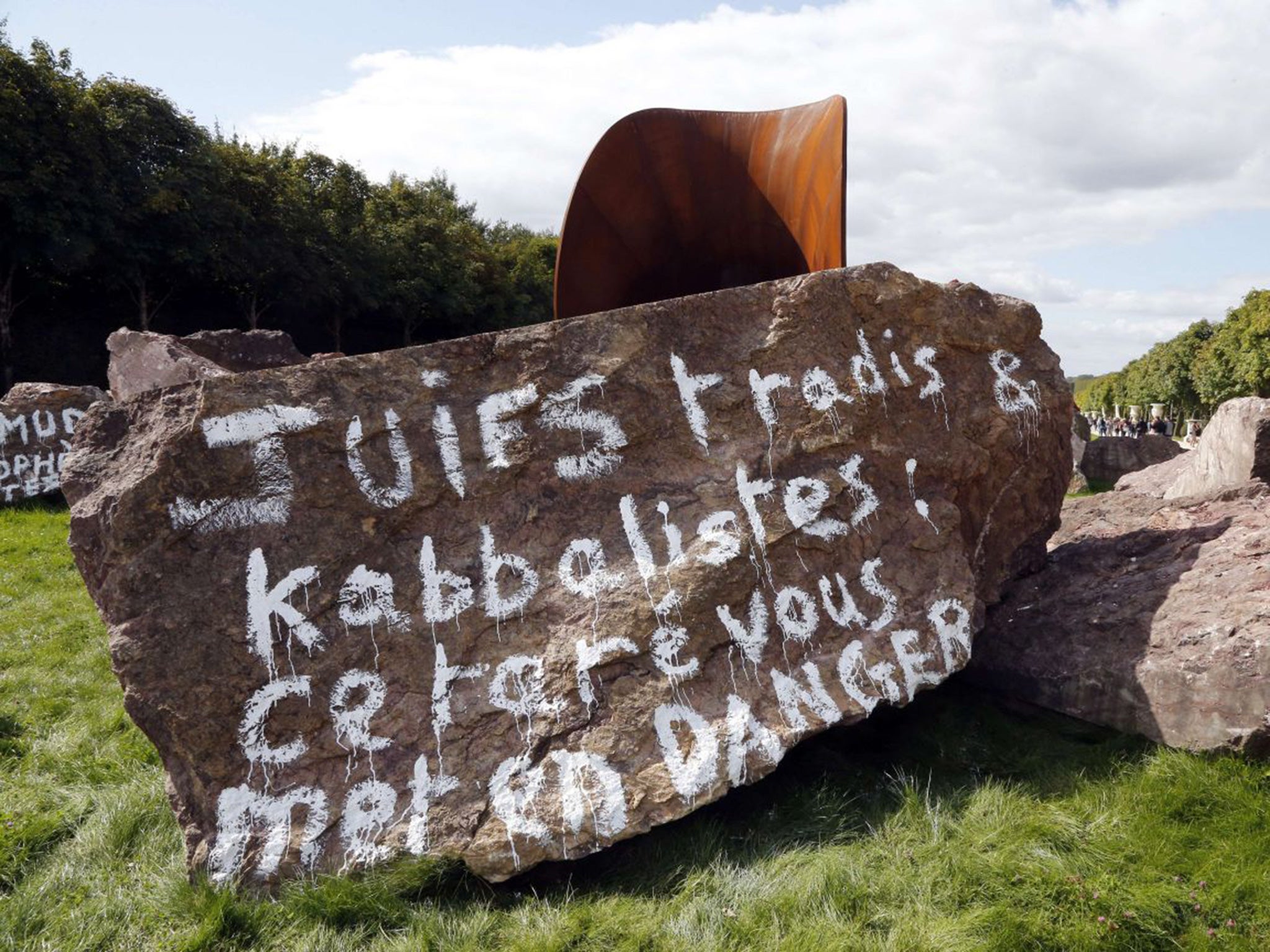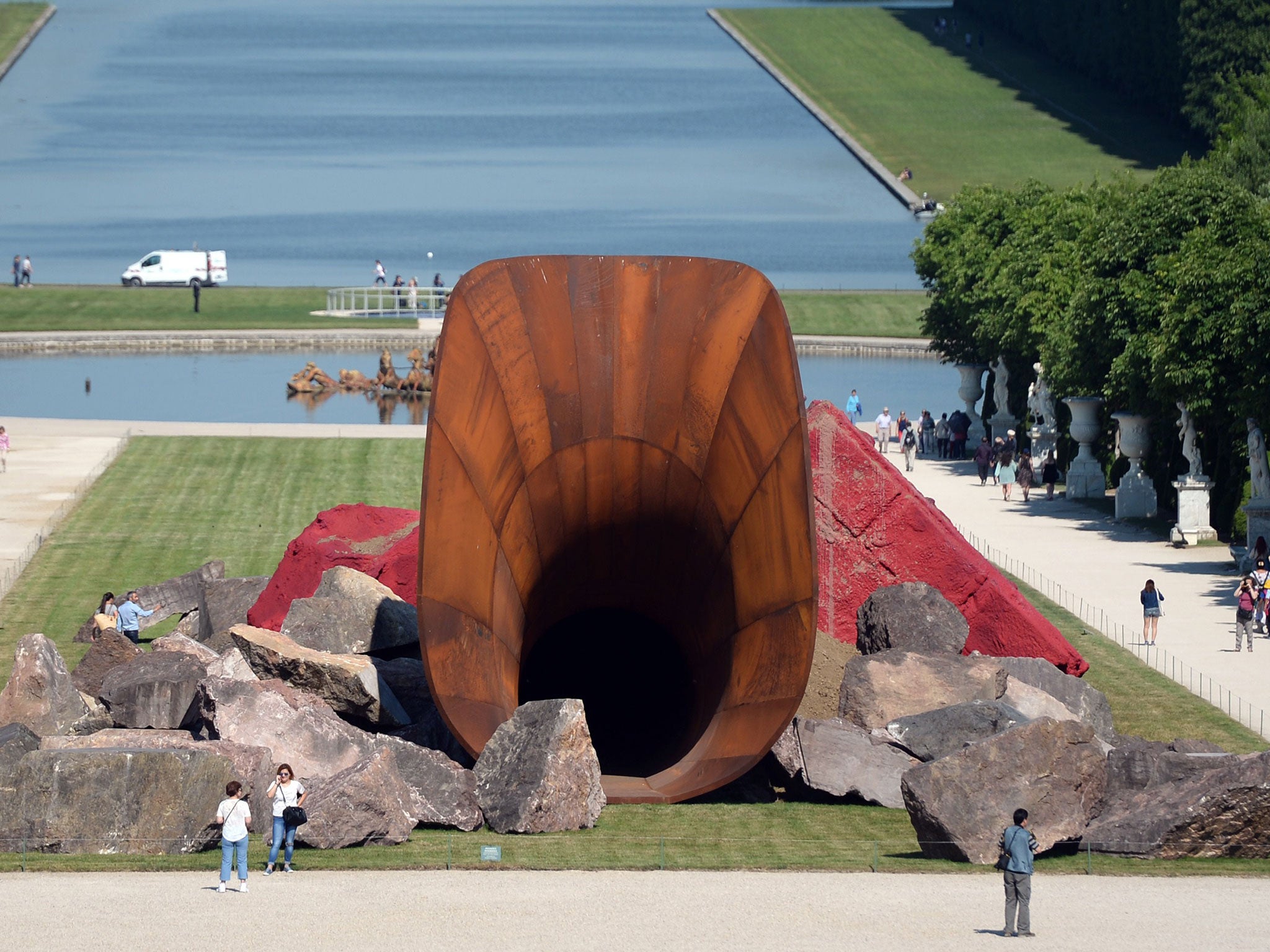Anish Kapoor wants to keep anti-Semitic vandalism on 'Dirty Corner' sculpture, he thinks
The artist said he was 'in the middle of deciding' to keep the offensive slogans, to turn the affirmative work of art into 'a lament to a state of intolerance'

Your support helps us to tell the story
From reproductive rights to climate change to Big Tech, The Independent is on the ground when the story is developing. Whether it's investigating the financials of Elon Musk's pro-Trump PAC or producing our latest documentary, 'The A Word', which shines a light on the American women fighting for reproductive rights, we know how important it is to parse out the facts from the messaging.
At such a critical moment in US history, we need reporters on the ground. Your donation allows us to keep sending journalists to speak to both sides of the story.
The Independent is trusted by Americans across the entire political spectrum. And unlike many other quality news outlets, we choose not to lock Americans out of our reporting and analysis with paywalls. We believe quality journalism should be available to everyone, paid for by those who can afford it.
Your support makes all the difference.Anish Kapoor has said he would like to see the offensive graffiti used to vandalise his Versailles sculpture “Dirty Corner” remain.
The artwork, which has been vandalised for a second time, was covered with slogans, including some that were anti-Semitic.
Kapoor, who is Jewish of Sephardic Iraqi origin, said although he found the graffiti “offensive” and “slightly frightening”, he was “in the middle of making the decision” that he wanted the slogans to stay.
“I think I have made the decision to leave, or I am in the middle of making the decision once I can extricate myself sufficiently from it, to leave the graffiti as part of the work. It is vile, so to turn what I hoped always was an act of affirmation as a work of art into something else, into a kind of lament to a state of intolerance,” he told Radio 4’s Today programme.

He said the vandalism gave greater complex meaning to the sculpture’s title, but said the decision to leave the offensive graffiti was still one he was “struggling with”.
“I very controversially call this work ‘Dirty Corner’…meaning or implying all sorts of thing, some rather sexual, but also human ideas about a certain loss of dignity.
“Now what this does is emphasise the dirtiness in so many ways. Dirty politics, disregard for common humanity, religious and otherwise. All these things are emphasised here, so i would say that as violent as it is, and deep offensive, but to leave it there is quite an assault on the viewer.”
He added it may be hard to eradicate the vandalism and restore the artwork from a “physical point of view”.
The artist denied the sculpture was a representation of “the vagina of the queen who took power”, which he was originally quoted as saying when it was first installed at the Palace of Versailles.
“It’s an abstract work, it bears little [resemblance to the vagina]. What I did say is ‘she’ reigns loud and clear in the context of this place of, let’s say, the French state.”
Join our commenting forum
Join thought-provoking conversations, follow other Independent readers and see their replies
Comments